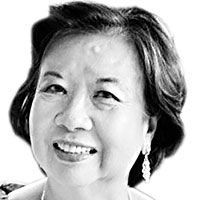Touring the mysteries of China

Jinsha – Next stop in this grand tour for a group of Filipino journalists to get to know more about China was the recently discovered archaeological site of Jinsha. We know that Chinese civilization came way before Western civilization but it is more and more proof that it happened beyond current estimates.
For someone from the Philippines, it was a culture shock to discover that we come from a region that had awesome beginnings to which we are part of in one way or another. Because of our colonial history by the West, we have all but forgotten the stories of our own beginning.
Our education has taken for granted through the books we read and the movies we watch that we are of the East. We know more about the Egyptian pyramid and the English Stonehenge than we do of the Sun and Immortal Bird gold ornament of China’s Jinsha.
* * *
To me, the archaelogical site in China’s Sichuan province was more than learning about the origins of Chinese civilization. It was a personal awakening to my regional roots. I am of the East rather than of the West. I could relate to the artifacts recently found here in the Quingyang District of Chengdu Prefecture remembering that there were similar finds in nearby Palawan. The artifacts in Jinsha were found by accident a group of workers digging for a real estate development.
A documentary “the Lost City of Jinsha” was made and shown in History Channel Asia by the China International Communication Center and hosted by Chinese-American archaeologist Dr. Agnes Hsu.
The film was widely acclaimed but it hardly reached the Philippines or it was just Filipinos in general being uninterested in their history. Perhaps it is I who should take the blame for thinking that it was irrelevant to know more about our early origins.
Had I not come with a group of Filipino journalists for the familiarization with the history and culture of China, I would never truly understand what is meant by our relations with this ancient country in renaissance poised to become a superpower.
It is time that China with all its wealth should fund a communication campaign about its great past to the rest of the peoples of the region. There should be more tours for Asians to the Jinsha Site Museum. As we walked through the Relics Hall, the Exhibition Hall, the Cultural Heritage Protection Center and the Ecological Garden, I thought this was the way to demonstrate the close relations between Chinese and Filipinos. It was correct that we view these relations through the prism of history. It would contribute greatly to an understanding of a contemporary problem such as the South China Sea conflict.
It may seem unimportant but if we start from the ancient history of our relations with China we would better understand each other. Whoever prepared the itinerary of our visit here in the last few days made the wise decision to look at our relations from the perspective of history.
* * *
Although there were dozens of sacrificial spots that yielded precious relics found in building spots and cemeteries unearthed in Jinsha two have been described as outstanding: The Sun and Immortal Bird Gold Ornament and the Gold Mask.
The first ornament shows four “immortal birds” flying around the sun. It has been interpreted by scholars as a symbol of the philosophical theory from the ancient Shu. It was a perfect achievement of creative imagination and exquisite craftsmanship and regarded as the emblem of China’s cultural heritage.
The second, the Gold Mask is more mysterious and gave rise to theories that the planet Earth was most probably once home to aliens. That is also sometimes used to explain the shape and perfection of the pyramids of Egypt.
In Jinsha Museum there is also a mystery about the perfection of the artifacts like the the gold mask. It is 19.5 cm wide and 11 cm high. It is the best preserved and largest gold mask in China. But what was it for? It is described in brochures as “the mask that played a role in communicating with immortals in ancient Shu.” It tells the story of worship, which means they don’t really know what it is. It has undertones of religion and similar explanations are given about other artifacts when modern men are unable to explain it. To me, visiting China, circa 2014 in the month of September, the specific reasons may never be found but it is startling that such are found in other ancient cultures in archaelogical discoveries in both the East or in the West. It offers a more universal appreciation of what man’s history was and perhaps also ultimately its destiny.
* * *
Another important site we visited was the Dujiangyan Irrigation System. It was built in 406–221 BC as a solution to the annual flooding of the Min River. Qin governor Li Bing solved the problem by building an artificial barrier to redirect a portion of the river’s flow. That barrier or levee was made from long sausage shaped baskets filled with stones. It worked and the flooding stopped. The construction is still in use today and seen by many tourists to Min River.
The irrigation made Sichuan the most productive agricultural place in China. It is now a UNESCO World Heritage Site.
- Latest
- Trending




























